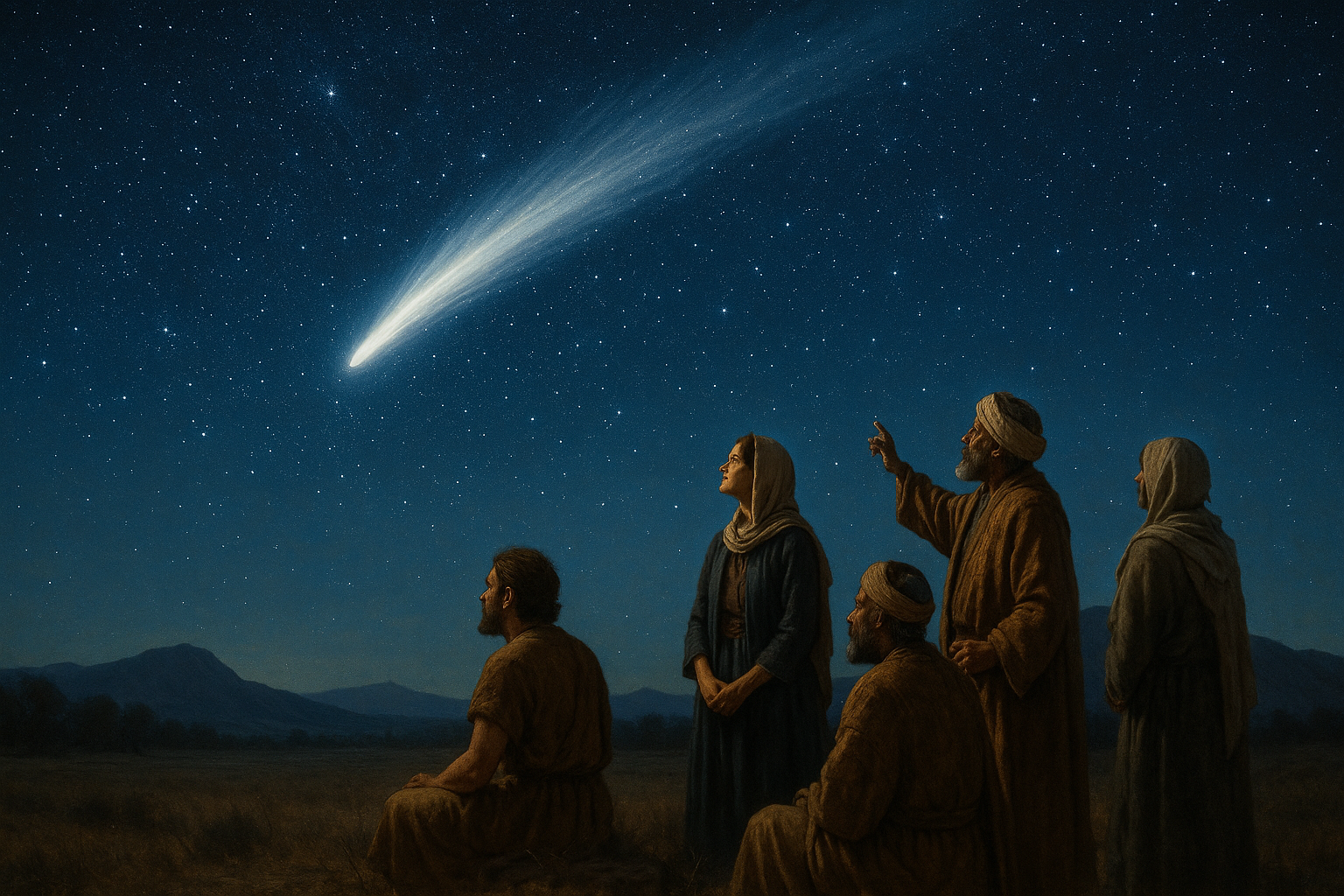In the vast canvas of the night sky, where stars twinkle like distant beacons, humanity has always found inspiration, wonder, and a sense of profound curiosity. For centuries, we have gazed upwards, crafting stories and navigating our journeys by the constellations that illuminate the darkness. Yet, as much as the night sky has guided us, it has also been a reminder of the mysteries that lie beyond our reach. Enter the captivating theme of our exploration: how harnessing the elemental power of firelight can pave the way for stellar exploration. This marriage of ancient technology and modern ambition presents a unique frontier in our quest to understand the cosmos, a journey where the simplest of tools can unlock the grandest of dreams. 🌌
As we delve into this intriguing intersection of firelight and exploration, we will first revisit the historical significance of fire as a cornerstone of human development. From the first flickering flames that offered warmth and protection to the transformative moments where fire became a tool for progress, understanding this legacy is key to appreciating its potential role in space exploration. We will then explore how contemporary science is reimagining fire’s utility in the realm of the stars, from its use in propulsion systems that can withstand the rigors of space travel to innovative methods of using firelight as a means of communication and power generation in extraterrestrial environments. This exploration will not only highlight the scientific advancements being made but also underscore the enduring allure of fire as a symbol of human ingenuity and resilience.
Moreover, we will consider the philosophical and cultural dimensions of using firelight for stellar exploration. What does it mean to bring such a primordial force into the quest for understanding the universe? How does this endeavor reflect our broader relationship with the natural world and the technologies we create? By examining these questions, we hope to illuminate not just the night sky but also the spirit of exploration that defines us. Whether you’re a seasoned astronomer, a passionate advocate for space exploration, or simply a curious soul looking to understand the cosmos a little better, this article will guide you through a journey that is as enlightening as it is awe-inspiring. So, prepare to embark on an odyssey where ancient elements meet futuristic aspirations, and where the glow of firelight might just be the key to unraveling the mysteries of the universe. 🚀✨
The Mystical Allure of Firelight in Exploration
The fascination with firelight is as old as humanity itself. From the earliest days of civilization, fire has played a crucial role in the survival and cultural development of our species. Its utility in providing warmth, protection, and a means to cook food is well documented. Yet, beyond its basic functionalities, firelight has captivated the human spirit and imagination, particularly when it comes to exploration. The glow of a flame has long been synonymous with guidance and discovery, serving as both a literal and metaphorical beacon for explorers traversing uncharted territories. In modern times, this relationship between firelight and exploration has taken on new dimensions, particularly in the context of space exploration, where the concept of harnessing firelight offers innovative approaches and possibilities.
In the vast expanse of the universe, where darkness reigns supreme, the notion of using firelight to illuminate celestial paths is both intriguing and groundbreaking. The very idea conjures images of spacecraft cutting through the void, guided by the glow of controlled flame, navigating the stars with a warmth and intimacy akin to that of ancient explorers journeying into the night. However, this is not just a romantic notion; it is rooted in tangible scientific inquiry and technological advancement. Researchers and engineers are exploring ways to utilize the principles of firelight, or more specifically, controlled nuclear reactions and plasma technology, to propel and navigate spacecraft with greater efficiency and precision.
At the core of this exploration is the search for sustainable and effective propulsion systems that can support long-duration space missions. Traditional chemical propulsion, while effective, is limited by fuel capacity and efficiency, constraints that become increasingly problematic as missions extend beyond our immediate cosmic neighborhood. The concept of using firelight, or more technically, nuclear thermal propulsion (NTP) and nuclear electric propulsion (NEP), presents viable alternatives that promise enhanced thrust capabilities and longer mission durations. Such systems utilize the intense heat generated by nuclear reactions to heat a propellant, typically hydrogen, which is then expelled to produce thrust. This method is not only more efficient than traditional chemical propulsion but also allows for greater control and adaptability during space missions.
Harnessing Firelight for Spacecraft Propulsion
The application of firelight in the form of nuclear propulsion is not a new concept; however, it has gained renewed interest and momentum in recent years as space agencies and private companies alike seek to push the boundaries of space exploration. The principles behind nuclear thermal and nuclear electric propulsion are based on well-established physics, yet the challenge lies in effectively integrating these systems into spacecraft design and operations. Recent advancements in materials science, reactor design, and thermal management have brought the practical implementation of these technologies closer to reality.
One of the key advantages of nuclear propulsion systems is their potential to significantly reduce travel time for interplanetary missions. For instance, a mission to Mars using traditional chemical propulsion might take up to nine months, whereas a spacecraft equipped with nuclear thermal propulsion could potentially halve that time. This reduction not only enhances the feasibility of such missions but also reduces the exposure of astronauts to harmful cosmic radiation, a major concern for long-duration space travel. Additionally, the increased efficiency and thrust provided by nuclear propulsion systems offer greater flexibility in mission planning, allowing for more complex trajectories and objectives.
Furthermore, the use of firelight in space exploration extends beyond propulsion. The concept of using small, controlled nuclear reactions to provide power for spacecraft systems is another avenue being actively explored. Nuclear electric propulsion, for example, converts the thermal energy from nuclear reactions into electricity, which then powers electric thrusters. This system, while providing less immediate thrust compared to nuclear thermal propulsion, offers sustained and efficient power delivery, making it ideal for deep-space missions where sunlight is scarce or insufficient for solar power.
| Propulsion Type | Thrust | Efficiency | Ideal Use |
|---|---|---|---|
| Chemical Propulsion | High | Low | Short-term Missions |
| Nuclear Thermal Propulsion | Moderate | High | Interplanetary Missions |
| Nuclear Electric Propulsion | Low | Very High | Deep Space Missions |
For a deeper understanding of nuclear propulsion technology, watch this insightful video: “The Future of Space Travel: Nuclear Propulsion” by SpaceXplained.
Exploring the Challenges and Opportunities
While the potential benefits of harnessing firelight for space exploration are substantial, the path to its implementation is fraught with challenges. Safety concerns are paramount, given the nature of nuclear reactions. The containment and control of nuclear material in the harsh environment of space require robust engineering solutions and stringent safety protocols. Additionally, the development and testing of these technologies are expensive and resource-intensive, necessitating significant investment and collaboration across international borders.
Despite these challenges, the opportunities presented by nuclear propulsion and power systems are too significant to ignore. They hold the promise of revolutionizing our approach to space exploration, opening new frontiers and possibilities. The ability to undertake missions to the outer planets, explore the asteroid belt in detail, or even venture beyond our solar system, becomes more feasible with these advancements. Moreover, the development of these technologies is likely to have far-reaching implications beyond space exploration, potentially influencing sectors such as energy generation and propulsion here on Earth.
As we stand on the brink of a new era in space exploration, the integration of firelight in the form of nuclear technology represents a transformative step forward. It embodies the spirit of innovation and discovery that has driven humanity to explore the unknown, pushing the boundaries of what is possible. By embracing these advancements, we not only enhance our capabilities in space but also reaffirm our commitment to exploring the cosmos with curiosity and courage.
- Firelight’s historical significance in exploration.
- Nuclear propulsion’s potential to reduce travel time and increase mission efficiency.
- The challenges of safety and development in nuclear space technology.
- Opportunities for deeper space exploration and technological advancements.

Conclusion
Concluding our journey through the fascinating theme of “Illuminate the Night: Harnessing Firelight for Stellar Exploration,” we find ourselves standing at the intersection of ancient tradition and cutting-edge innovation. This exploration, bridging the simplicity of firelight and the complexity of space technology, has unveiled profound insights into both our past and our potential future.
At the outset, we delved into the historical significance of firelight, tracing its role as one of humanity’s earliest sources of illumination and warmth. This ancient technology, with its primal glow, served as a metaphorical and literal beacon, guiding early humans through the dark and igniting the spark of discovery and exploration that has been a constant through the ages. We explored how firelight has been an enduring symbol of hope and guidance, fostering community and storytelling, while also paving the way for innovations that have transformed our approach to exploration.
Moving forward, we examined the contemporary relevance of firelight-inspired technologies in the context of stellar exploration. Firelight, when conceptualized through modern technology, has inspired advancements in sustainable energy solutions that are crucial for long-duration space missions. We discussed the innovative use of firelight principles in the development of new energy systems that could potentially power habitats on distant planets, offering a reliable and efficient source of light and heat in environments far removed from the comforts of Earth.
In addition to its practical applications, the symbolic nature of firelight in guiding humanity’s quest for knowledge was also a central theme. This symbolism was explored through the lens of stellar navigation, where the light of distant stars and galaxies serves as a guide for spacecraft traversing the vastness of space. Here, we highlighted the cutting-edge research and technologies that are harnessing the principles of light and energy to propel humanity further into the cosmos.
Our exploration would not be complete without acknowledging the ethical and philosophical considerations that accompany such technological advancements. We discussed the importance of sustainable and responsible exploration, emphasizing the need to balance our quest for knowledge with the preservation of celestial bodies and the broader cosmic environment. The discussion underscored the importance of international cooperation and the establishment of ethical guidelines to ensure that our ventures into space are conducted with respect for both the unknown worlds we explore and the one we call home.
The significance of this topic extends beyond the scientific and technological realms, touching on the core of what it means to be human. Firelight, in its most symbolic form, represents the human spirit’s unyielding desire to push boundaries, to seek out new horizons, and to understand the universe we inhabit. It is this spirit that drives our curiosity and fuels our ambitions to reach for the stars, quite literally.
As we conclude, let us reflect on the importance of continued exploration and innovation. In an era where the night sky is both a map of ancient stories and a frontier of new discoveries, embracing the spirit of firelight can inspire us to tread boldly into the future. By fostering interdisciplinary collaboration and cultivating a culture of curiosity and respect for the cosmos, we can illuminate the path to discoveries that will shape our understanding of the universe for generations to come.
We encourage you, dear reader, to engage with this material and consider the broader implications of harnessing firelight for stellar exploration. How can these innovations inspire you in your own field? What role might you play in the unfolding narrative of human exploration? Share your thoughts and insights with your community, fostering dialogue that could spark new ideas and collaborations.
Feel free to share this article with others who might find the topic as inspiring as you have. Together, let’s kindle the flame of exploration and ensure it burns brightly for all of humanity. After all, it is in our nature to explore, to illuminate, and to reach for the stars. 🚀✨
For further reading on the subjects discussed, consider exploring resources such as NASA’s Technology Transfer Program and The International Dark-Sky Association, both of which offer a wealth of information on sustainable technologies and celestial preservation efforts.
Thank you for being part of this illuminating journey. Let us continue to harness the light, both old and new, as we explore the stellar possibilities that lie ahead.
Toni Santos is a visual storyteller and cosmic interpreter whose work illuminates the ancient skywatchers and their prehistoric astronomy—the profound ways early humans observed and revered the heavens before written history. Through a visionary lens, Toni explores how the stars, planets, and celestial cycles shaped myth, ritual, and survival in cultures lost to time.
Rooted in a fascination with archaic observatories, stone alignments, and celestial symbolism, Toni’s creative journey reveals the deep human impulse to understand and harmonize with the cosmos. From lunar phases guiding planting seasons to the sacred paths of the Milky Way, each of his works embodies the awe and knowledge encoded in the night sky.
Combining artistic craftsmanship with archaeological insight, Toni’s pieces evoke the mystery and precision of prehistoric astronomers. His work does more than depict—it channels the timeless dance between earth and sky, bridging ancient wisdom with contemporary wonder.
As the visionary behind Vizovex, Toni shares curated visuals, essays, and symbolic studies that invite others to reconnect with the cosmic heritage written in stone and starlight. His creations are a call to look upward, to listen to the silent stories told by the stars, and to honor the first astronomers who mapped the heavens with reverence and ingenuity.
His work is a tribute to:
The celestial wisdom of prehistoric peoples
The sacred geometry of ancient observatories
The enduring bond between human culture and the cosmos
Whether you’re a stargazer, a scholar of ancient mysteries, or someone captivated by the universe’s earliest storytellers, Toni welcomes you to journey through a space where the sky is both map and myth—one constellation, one ritual, one revelation at a time.




